Baekundonggyegok Valley (백운동계곡)
8.1 Km 7960 2019-12-05
Baekdam-ro, Buk-myeon, Inje-gun, Gangwon-do
+82-33-462-2554
Baekundonggyegok Valley flows 5 km from the valley of Deoktaesan Mountain and Seongaksan Mountain. There are oak trees and maple trees growing in thick clusters and clean waters flowing nearby.
Baekundonggyegok Valley stands between the seven brother stones and Yongdampokpo Falls, and starting from this point to Gwuiddegicheong Peak is Baekundonggyegok Valley. The rocks are connected in a long line and ponds can be seen here and there. On each side of the valley there are rock walls, which make for some unforgettable scenery. Baekundonggyegok Valley maintains its natural beauty and majesty, which attracts many hikers. Especially from the middle point where Jikbaekun and Gokbaekun combine to make the Gugokgyegok Valley the most magnificent scenery of Baekundonggyegok Valley can be seen. The largest waterfall of Baekundonggyegok Valley, called Baekunpokpo Falls, is about 30 meters high. The upper part of the waterfall has rocks lined up in a long line. The landscape of Seoraksan Mountain seen from this point is the representative landscape of the mountain.
Seoraksan Gwongeumseong Fortress (설악산 권금성)
10.3 Km 65590 2024-02-28
1091 Seoraksan-ro, Sokcho-si, Gangwon-do
+82-33-636-7700
Gwongeumseong Fortress is a stone castle from the Goryeo dynasty and is located 800 meters above sea level in Seoraksan National Park. From a distance, Gwongeumseong Fortress looks like a rising peak, while up close, the expansive stone floor and remnants of castle walls become visible. Visitors can access the fortress via hiking trails or by taking a cable car. From the fortress, visitors can enjoy the majestic view of Seoraksan Mountain and the blue waters of the East Sea.
Jangsudae Pavilion (장수대)
10.3 Km 8983 2020-03-24
4193, Seorak-ro, Inje-gun, Gangwon-do
+82-33-463-3476
Jangsudae Pavilion was completed on October 1, 1959 to commemorate the great victory of the battle held at Seoraksan Mountain during the Korean War. It serves as a resting spot for visitors who hike up the park to visit attractions nearby such as the Daeseung Falls, Oknyeotang Spring, Gamatang Spring, Hangyesanseong Fortress, and Haneulbyeok Wall. The pavilion is built in a traditional Korean style and considered as an excellent hermitage in terms of both structure and size. The surrounding nature consisting of mountain cliffs and pine forest makes the building stand out even more.
Yukdampokpo Falls (육담폭포)
10.7 Km 18608 2021-07-14
Seoraksan-ro, Sokcho-si, Gangwon-do
+82-33-801-0900
If you begin at Seorak-dong in Oeseorak, cross the Biryonggyo Bridge and pass by the Biryongpokpo Falls, you will reach Yukdampokpo Falls, which actually consist of six waterfalls and a pond.
Despite the fact that only a small amount of water actually flows in these waterfalls today, what is interesting, is how they came into existence: a slow-flowing stream of water eroded the rocks, creating dips and puddles at various levels, which later became a series of cascading waterfalls. The splendid scenery around the waterfalls is always a pleasing sight to the eyes of visitors.
Seoraksan Cable Car (설악산 케이블카)
10.8 Km 78221 2024-04-08
1085 Seoraksan-ro, Sokcho-si, Gangwon-do
A ride on the Seoraksan Cable Car is the best way to enjoy the unexplored regions of Seoraksan Mountain. The cable car station is located in Seoraksan National Park, and it takes about 10 minutes to reach Gwongeumseong Fortress, which is 700 meters above sea level. Since one-way tickets are not available, passengers must purchase a round-trip ticket. From the cable car window, passengers can see famous attractions like Ulsanbawi Peak and Manmulsang Rocks. From Gwongeumseong Fortress, passengers can take in a panoramic view of Seoraksan Mountain. Seoraksan Mountain, seen from the top of Gwongeumseong Fortress, is majestic and mysterious with unique rock formations. Upon reaching the top of the mountain, the entire scenery of Outer Seorak unfolds before one's eyes. Visitors will be amazed by the Allak Hermitage from the Silla dynasty and the Muhagsong Pine Tree, which has survived for hundreds of years just below Gwongeumseong Fortress. There are many tourists on weekends, public holidays, and fall foliage season, so visitors are advised to plan ahead.
Cheonbuldong Valley (천불동계곡)
10.8 Km 29791 2021-04-09
1091, Seoraksan-ro, Sokcho-si, Gangwon-do
+82-33-801-0900
As one of the Ten Sights of Seoraksan Mountain, the Cheonbuldong Valley is also called Seorakgol Valley, being a representative valley of the mountain. Along the valley covering about 7 km from Biseondae Rock to Daecheongbong Peak, visitors can enjoy the splendid scenery of various attractions including Waseondae Rock, Munjudam Pool, Ihodam Pool, Gwimyeonam Rock, Oryeon Falls, and Cheondang Falls. It has all magnificent views of Seoraksan Mountain. The Cheonbuldong Valley is also regarded as one of Korea’s top 3 valleys along with Chilseon Valley of Jirisan Mountain and Tamna Valley of Hallasan Mountain. It offers beautiful seasonal views every year, and among them, the autumnal foliage is considered the best scenery of the valley. Its colorfully-tinged autumnal leaves are in harmony with rocks in fantastic shapes, attracting many hikers in autumn.
Geumganggul Cave (금강굴)
10.8 Km 28146 2019-11-27
1091, Seoraksan-ro, Sokcho-si, Gangwon-do
+82-33-801-0900
Hollowed into the rocks of Seoraksan Mountain, about 600 meters above sea level, you will find Geumganggul Cave. This 23 square meters cave was once used as a place of worship, and contains a stone sitting Buddha and some earthenware. The route up the cave is quite steep, and visitors must walk across a few bridges and up concrete stairways. However, you will be rewarded with a captivating view of Cheonbuldong Valley.
The hiking trail from Seorakdong to Geumganggul Cave, which also passes by Biseondae, is 3.6 kilometers long and takes about 1 hour and 40 minutes.
Biseondae Rock (비선대)
10.8 Km 19608 2021-04-09
1091, Seoraksan-ro, Sokcho-si, Gangwon-do
+82-33-801-0900
Biseondae Rock is a large rock located in the Cheonbuldong Valley of Seoraksan Mountain. The rock blended with a giant surrounding rocky wall creates a mysterious atmosphere. When it rains, water flows down through the rock and forms a small waterfall. The stream of water winding around the rock is considered the magnificent view, which is similar to that of the Manpokdong Valley in Geumgangsan Mountain. When the season changes, its landscape boasts different scenery: full-blown flowers in spring, green and refreshing trees in summer, colorful autumnal leaves in autumn, and white snowy view in winter. Due to such a mysterious landscape, Biseondae Rock bears a legend in which Taoist hermit called Magoseon enjoyed scenery of this place and ascended to heaven. The name of Biseondae, meaning the rock (dae) where a Taoist hermit (seon) flew up (bi) to the sky, originates from this legend.
Seoraksan National Park (Outer Seorak) (설악산 국립공원 (외설악))
10.9 Km 449695 2024-04-08
1 Daecheongbong-gil, Yangyang-gun, Gangwon-do
+82-33-801-0900
Seoraksan Mountain is renowed for its natural splendors and breathtaking views. It holds the distinction of being Korea's first UNESCO Biosphere Reserve and is also listed on the IUCN Green List. The mountain is divided into Inner Seorak, South Seorak, and Outer Seorak, which includes Daecheongbong peak (1,708 meters above sea level), ranking as the third highest peak in Korea. The area is celebrated for its popular hiking trails, with the sunrise and sunset views from the top being particularly spectacular.
Sinheungsa Temple (Seoraksan Mountain) (신흥사(설악산))
11.0 Km 74983 2024-03-12
1137 Seoraksan-ro, Sokcho-si, Gangwon-do
+82-33-636-7044
Sinheungsa Temple is a temple located in Seoraksan Mountain near Sokcho. It belongs to the Jogye Order of Korean Buddhism. It was originally founded as Hyangseongsa Temple by the monk Jajang in the Shilla dynasty (A.D. 652). Within the temple grounds, cultural heritage sites such as Geungnakbojeon Hall, a wooden structure from the mid-Joseon period, and the Three-story Stone Pagoda at Hyangseongsa Temple Site. The temple offers a templestay program where visitors can experience temple life firsthand. Participants can engage in various activities such as Buddhist ceremonies, Buddhist prayer, 108 prostrations, and lotus lantern and rosary making.

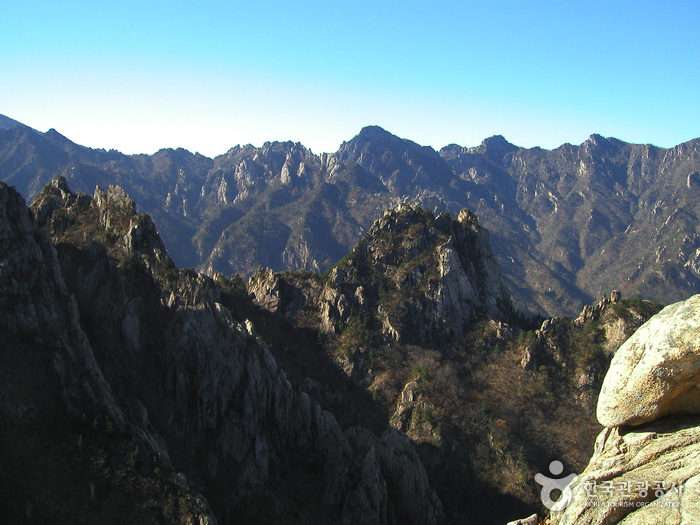
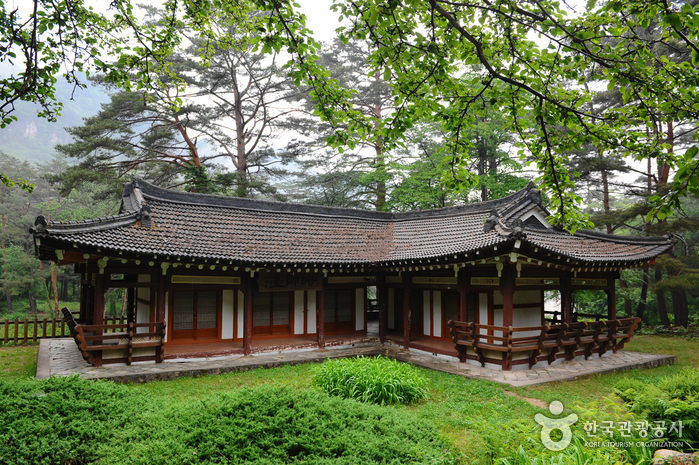
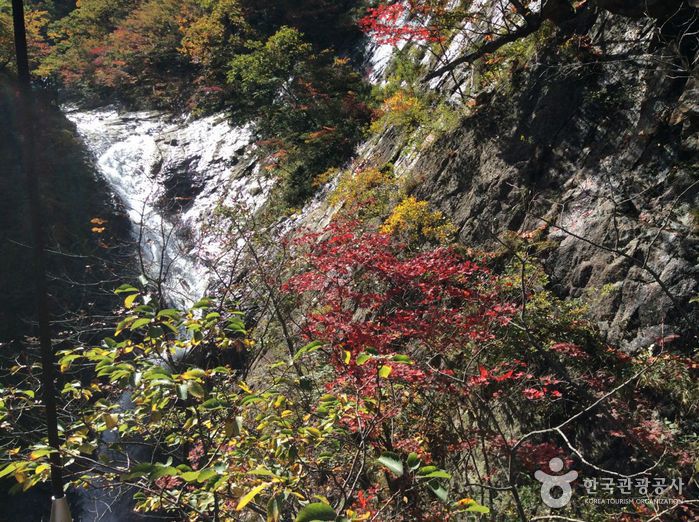
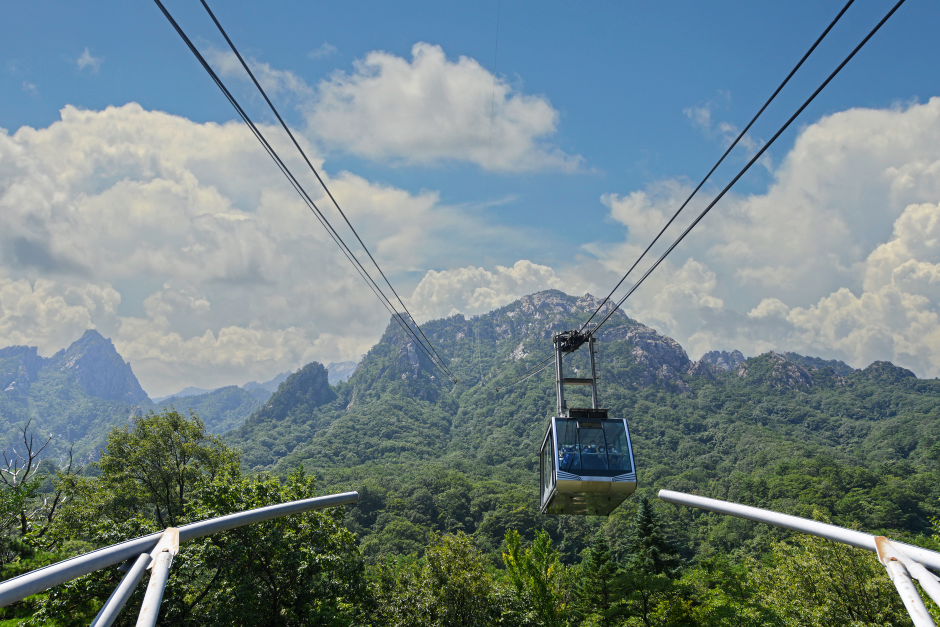
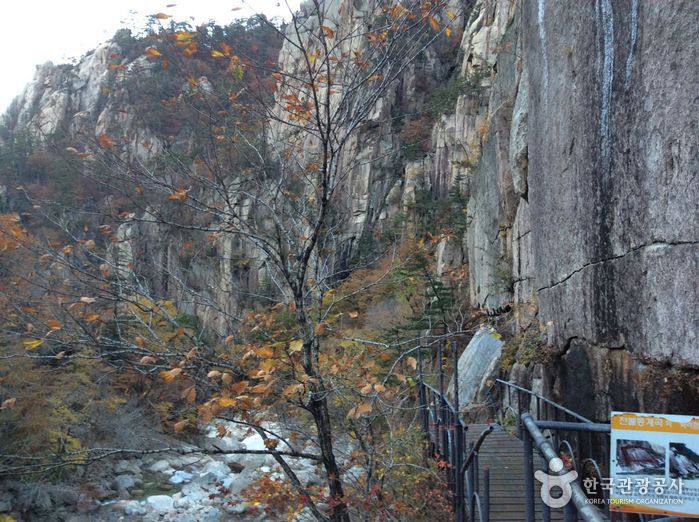
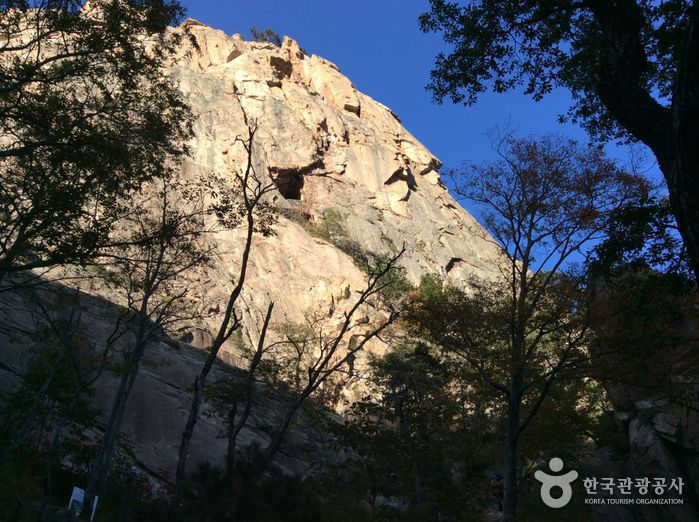
 English
English
 한국어
한국어 日本語
日本語 中文(简体)
中文(简体) Deutsch
Deutsch Français
Français Español
Español Русский
Русский